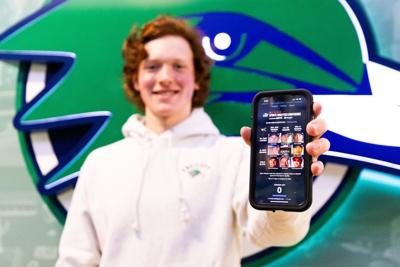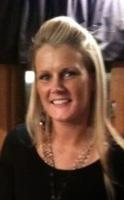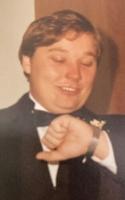Ben Gillis has such an analytical mind that even talking about how much he loves baseball comes out in percentages.
“I’d say maybe 80 percent of my waking thoughts are consumed by baseball,” said Gillis, a sophomore at Endicott College who is already making a splash as a young mind in the analytics world.
Growing up in Marblehead, Gillis dreamed of working in baseball and is determined to do everything he can to make that a reality. After interning with the North Shore Navigators last summer, he’s been promoted to the team’s Director of Baseball Operations.
This spring, he’s also begun working as a student analyst for the No. 1 nationally ranked Gulls baseball team.
Earlier this month, he attended the famed MIT SLOAN sports analytics conference at the Massachusetts Institute of Technology in Boston. The 18th annual gathering of the sharpest minds on the cutting edge of new technology in sports was a great learning experience — and Gillis won the special Immaculate Grid contest set up just for that event.
For those unfamiliar, the Immaculate Grid is a daily online game that features nine squares with categories on the horizontal and vertical edges such as “Kansas City Royals” or “.300 career batting average.” Players think of athletes that meet both criteria and receive a rarity score based on how popular your choice is; for example, using Bronson Arroyo as a Red Sox pitcher would typically get a lower rarity score than choosing Pedro Martinez.
There are games for just about every sport (and even entertainment genres like TV and wrestling) but baseball’s seems to be the most popular, given the wide array of history in the game.
“I do the grid every day and I’m usually in the single digits for a rarity score. But that’s usually with hundreds of thousands of people entering,” said Gillis. “Sports reference made a grid just for the conference ... and everybody there is so smart. You’re talking maybe 2,600 people, and most are Ivy Leaguers.”
It took Gillis about half-an-hour to complete his grid, which included Andy Messersmith, Andy Van Slyke, Ellis Burks, Brian Giles, Rusty Staub, Julio Franco, Javier Vazquez, Chuck Knoblauch and Kevin Appier. One the rarity scores were tallied up, he was declared baseball’s winner and got to go on stage to be recognized with some of the other winners.
“It was a ‘Holy crap!’ moment,” he said.
‘More information is always good’
The experience at the conference wasn’t just about playing games, however. Gillis, who is majoring in in business with an analytics minor, met a lot of fascinating people at the SLOAN conference. Among the highlights for him was Learning about the best ways to communicate the data he gathers so it can be best used by players on the field.
“I met someone that works in a Major League dugout and got to pick his brain a little bit,” Gillis said. “The thing I’m always thinking about and working on is communication. How do I give the information to the players in a way that makes sense ... that isn’t overwhelming and helps them get better.”
What sort of data is Gillis gathering? It’s basically endless.
With pitching, movement tracking technology like Rapsodo can track the movement of a baseball down to the centimeter. How fast the ball spins can indicate how much it might move, either horizontally or vertically. The way a pitcher’s arm moves can also be tracked ... either to predict what pitch might be coming or to help make adjustments for a hurler in a funk.
There’s also traditional scouting data, such as the probability any pitcher might offer a changeup in a certain count.
“It can gauge where a guy is at, what works and what doesn’t work. If something looks off, you can see where to make adjustments,” said Gillis, who figures Endicott must be among the leaders in technology use in Division 3. “There are times when it’s difficult to gather the info for opponents, because of the lack of data versus the percentage of possible outcomes.
Head coach Bryan Haley and the Gulls have been using tracking technology in practice for a few years. “More information is always good” is one of their key philosophies, so having a student analyst like Gillis around to help crunch the numbers for Endicott and present more possible scenarios has been a big help.
“They’re a great group of guys and I can’t thank coach Haley enough,” Gillis said. “They accepted me on the spot. The team’s been so supportive and receptive to the information.”
On the cutting edge
With the Navigators, Gillis ran the team’s Trackman system last summer and produced plenty of data for the players to munch on. Offensively, data like swing path, launch angle and bat speed can help a hitter prepare for certain pitchers or hit for more power ... never bad things.
“The NECBL is a showcase league ... all of our guys are trying to get scouted, so I’m trying to do everything I can do help them play the best that they can,” said Gillis. “The amount of information you can get, both offensively and pitching, from having a Trackman set-up is incredible. It’s utterly fascinating.”
Gillis said he’s incredibly grateful to Navigators President Derek January for handing him the reigns in terms of analytics last summer. He can’t wait to get back to Fraser Field in Lynn this summer and see if he can expand upon the already strong situation.
“Ben joined us last year and immediately proved he is a future star in the baseball world,” January said. “Our talent isn’t just on the field; we have an incredible internship program where our interns are gaining massive amounts of usable experience in the sports world. For us, it’s as fun to watch their careers blossom as much as it is to follow the players in their journey to the big leagues.”
Also studying some computer programming so he can customize some of the information inputs, Gillis is a sponge for learning new things in the baseball and analytical worlds. He sees the amount of progress that’s been made in terms of studying tendencies and bio-mechanics just in the last five years and wonders where it might grow to in the future.
His main aim, though, is to work in baseball in any capacity possible; he’s even written a few articles on pitching for baseball Web sites. But as many teams continue to expand their analytics departments and embrace technology in the front office, he figures it is good to be on the cutting edge.
“Baseball is what I truly love so I have to everything in my power to make this happen,” Gillis said. “All I want to be is be in the game for as long as I possibly can be ... and help teams win.”












